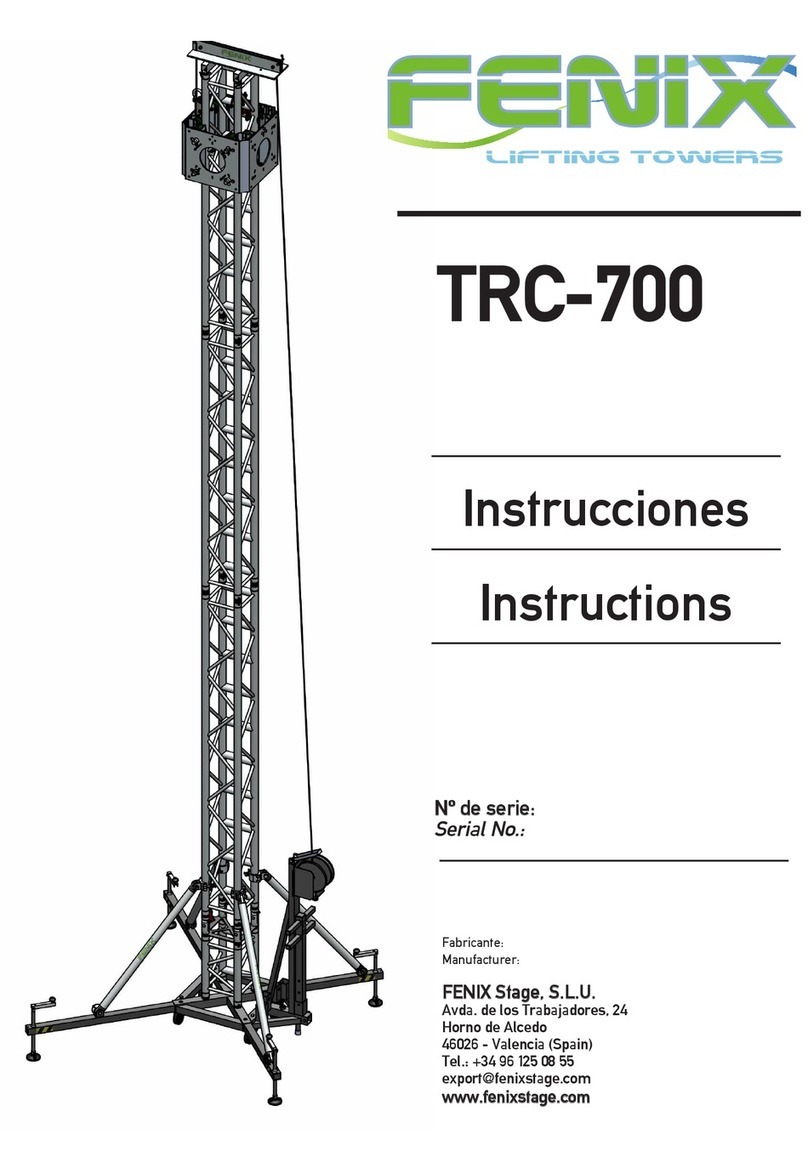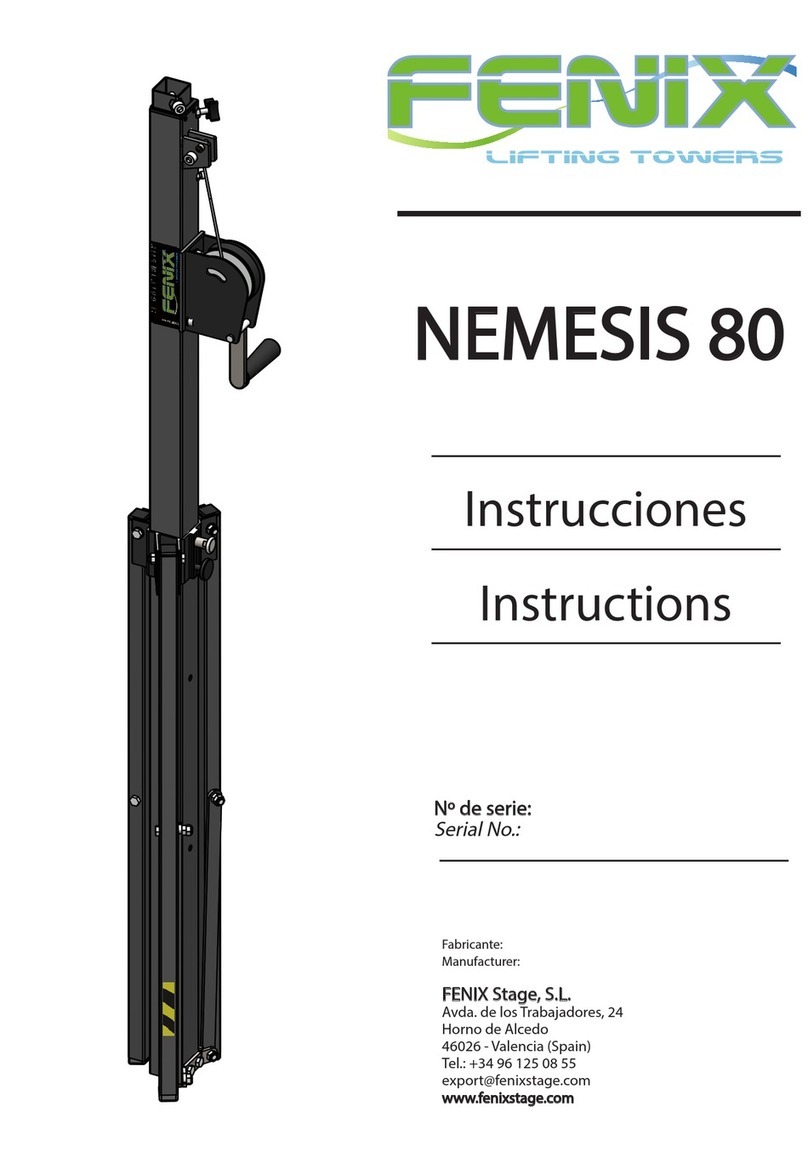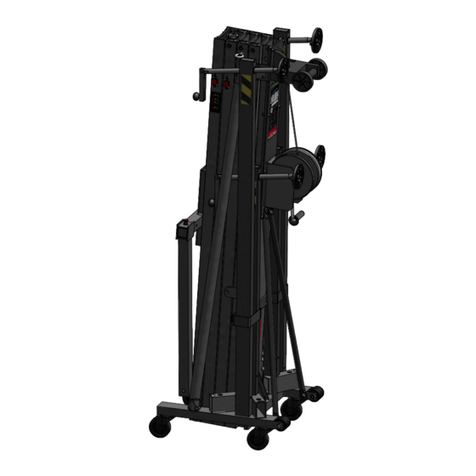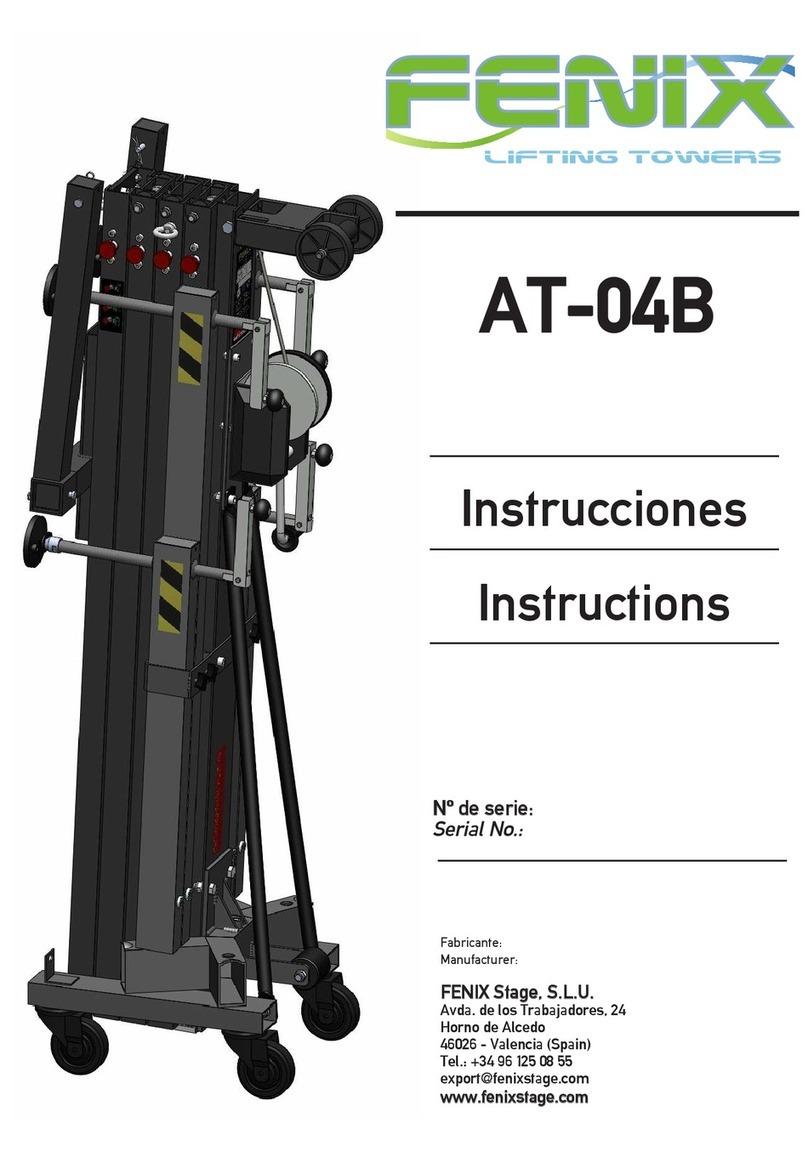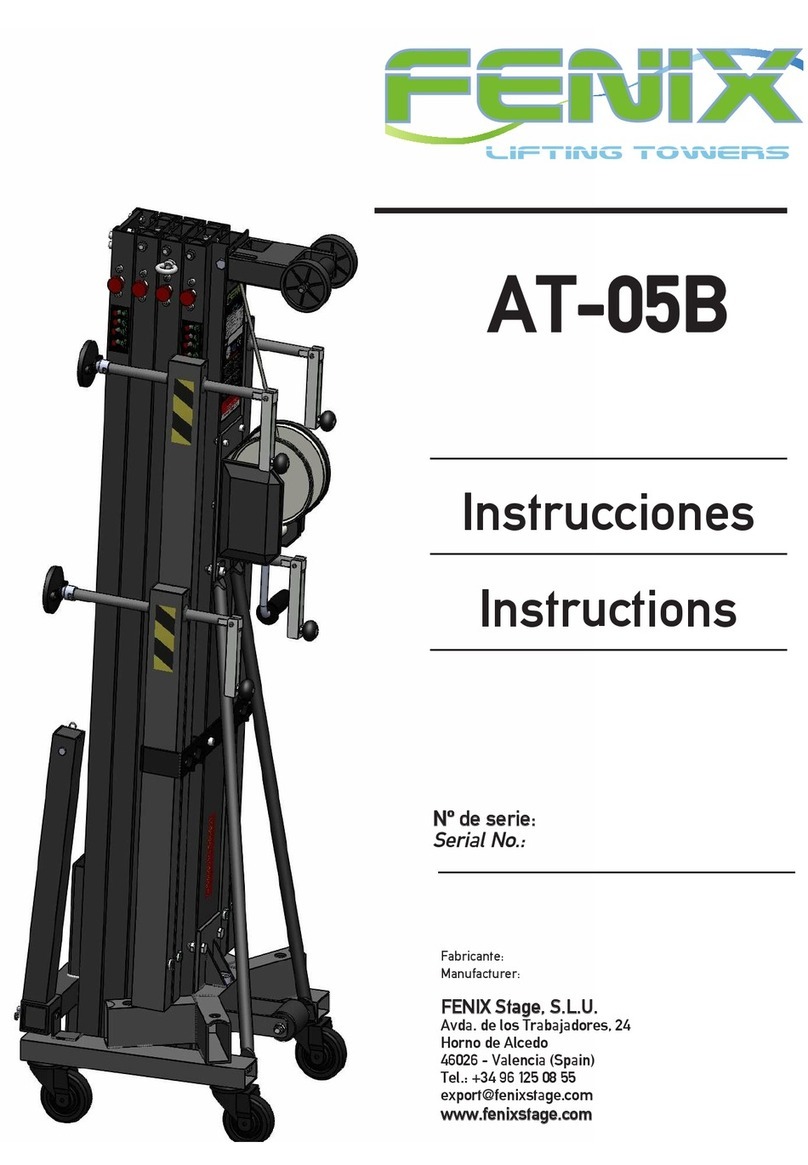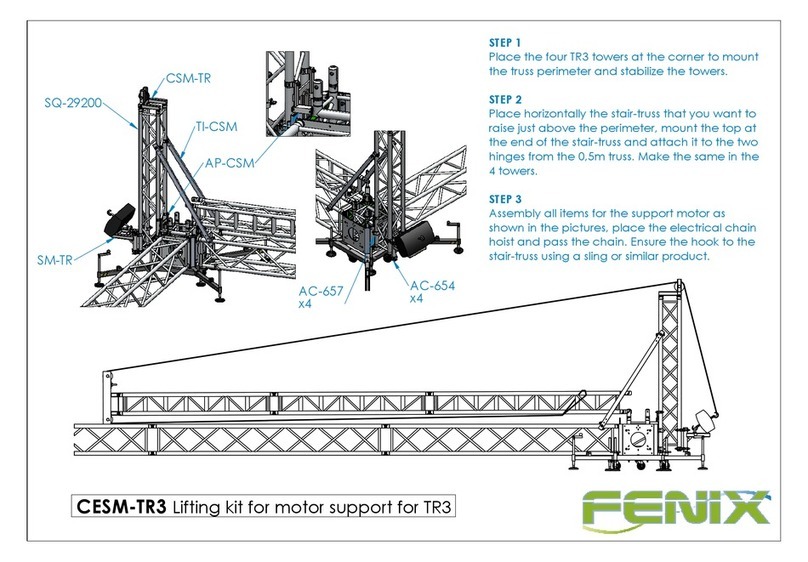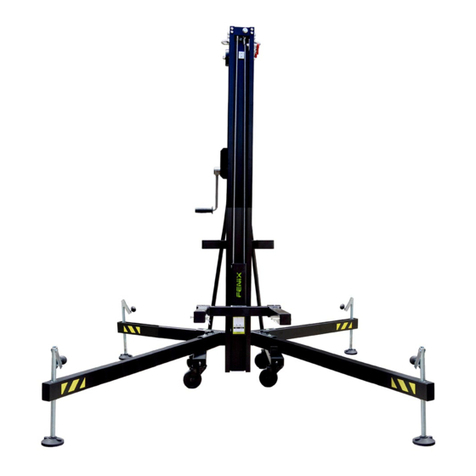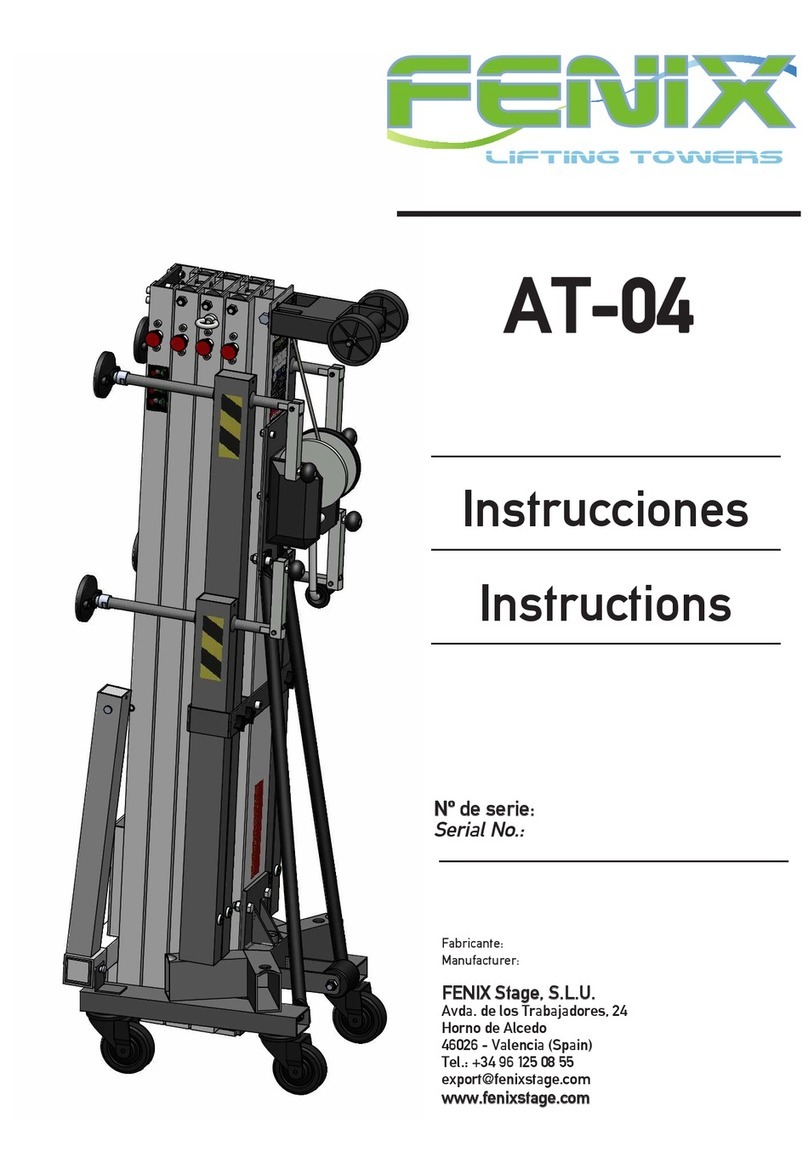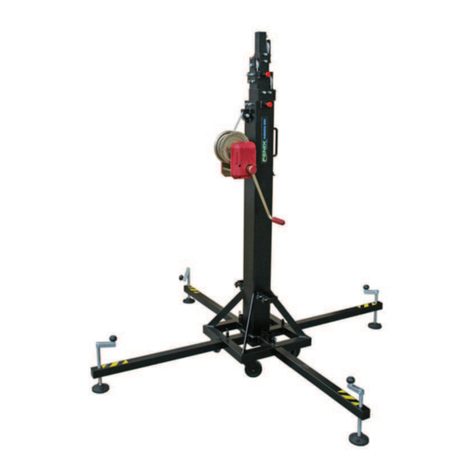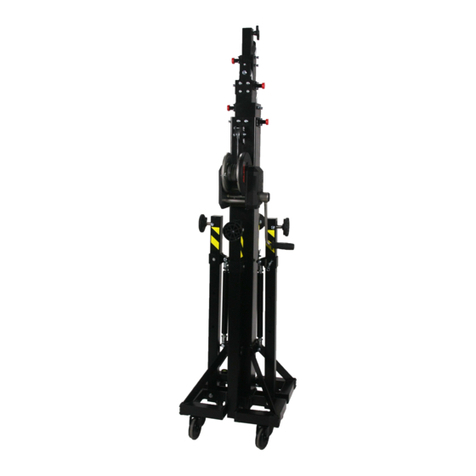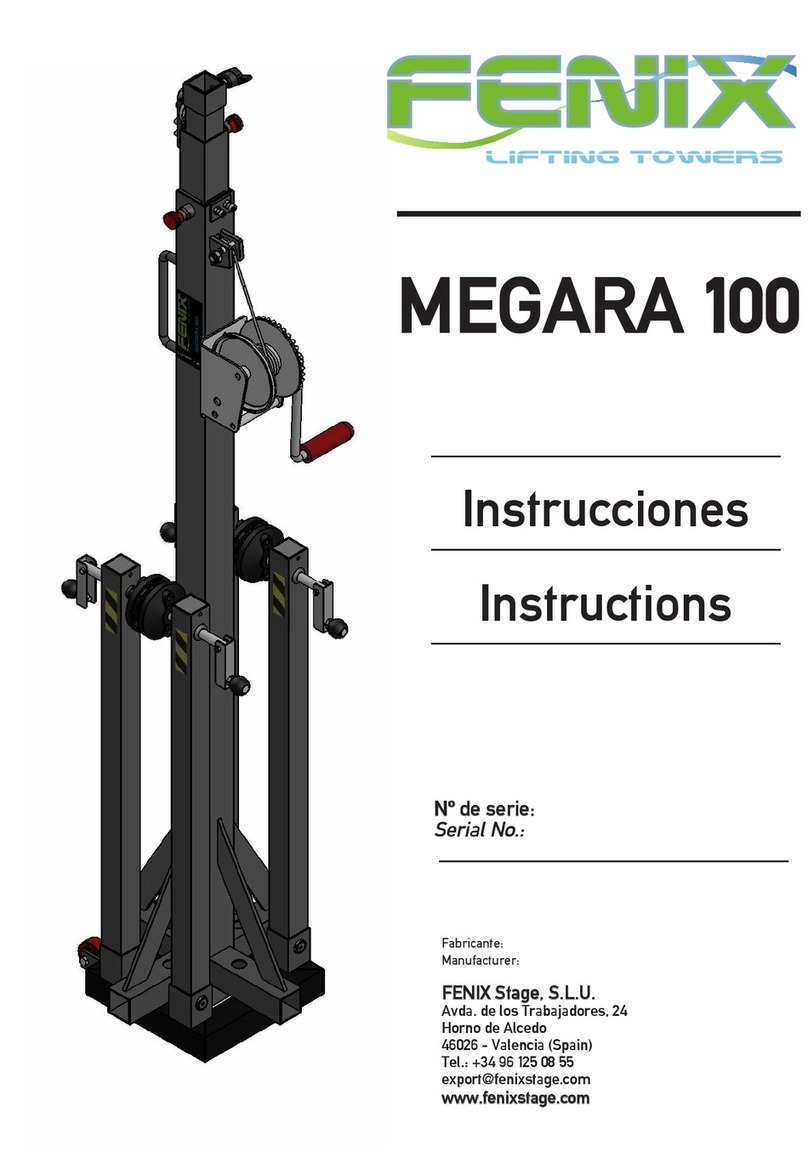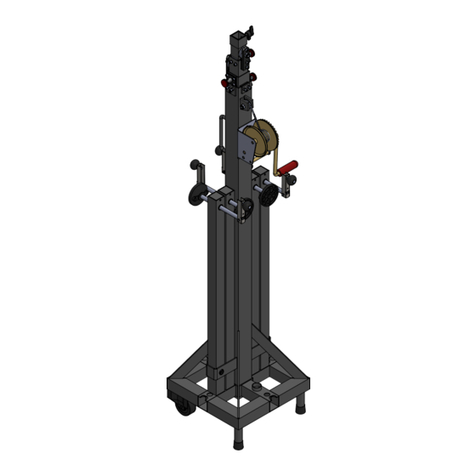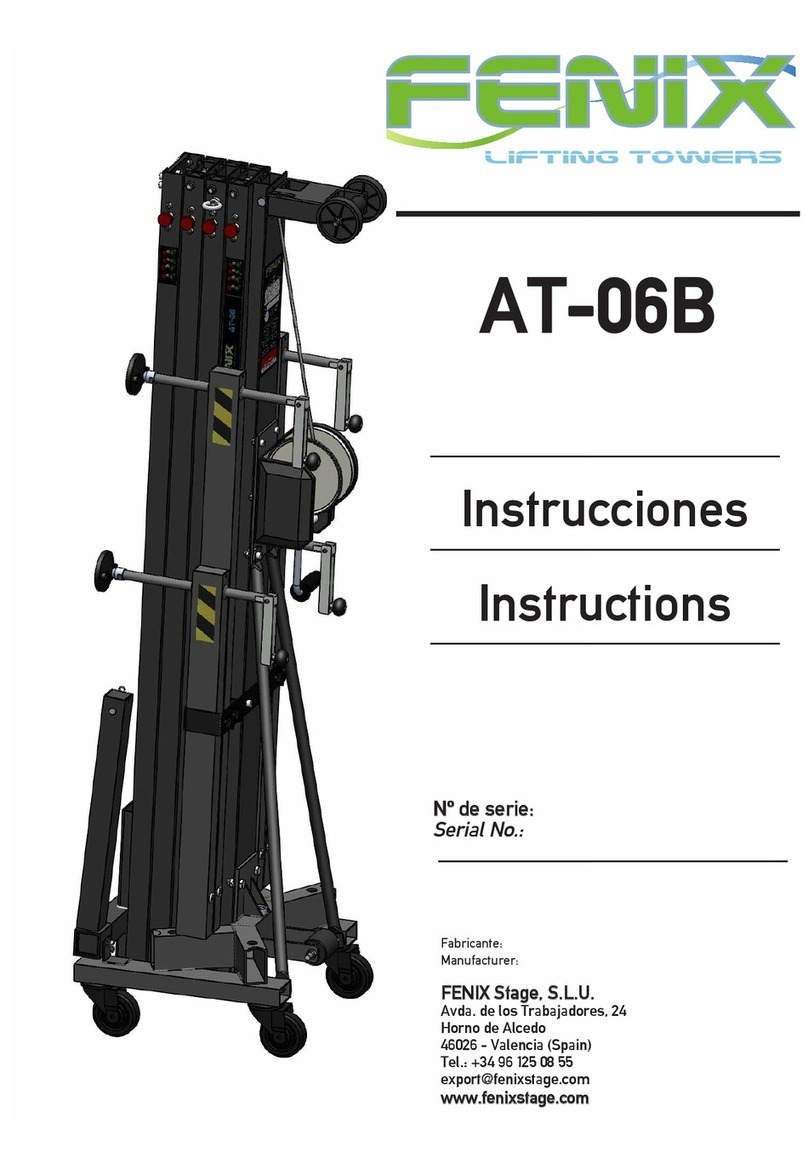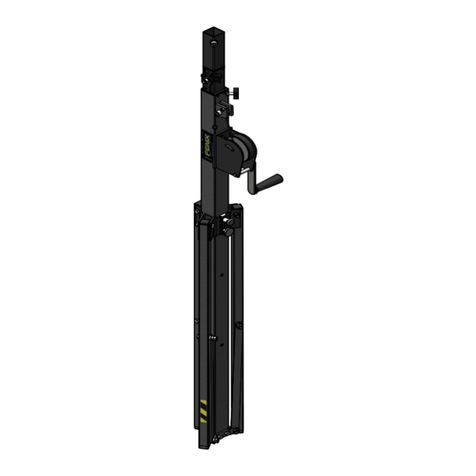
99
ESPAÑOL
4. INSTRUCCIONES DE USO
1. Colocar la torre elevadora sobre una su-
percie plana y rme en su emplazamiento
de trabajo.
2. Liberar el pomo metálico (W) y poner el
gatillo de seguridad (V) en posición abier-
ta (T). Estirar del asa (L) y presionar hacia
abajo. Poner el gatillo de seguridad (V) en
posición cerrada (S) y seguir presionando
hasta que el gatillo de seguridad (V) ajuste a
la altura deseada. Volver a apretar el pomo
metálico (W).
3. La torre elevadora cuenta con una barra
prolongadora (Z) de 60cm que es la que per-
mite alcanzar la altura máxima. En caso de
necesitar utilizarla, liberar el pomo de plásti-
co (C) y sacar la barra prolongadora (Z) de su
soporte de transporte (X). Colocar la barra
prolongadora (Z) en la barra superior y apre-
tar el tornillo palometa (P) para que quede
jada.
4. Colocar la carga que se va a elevar sobre la
torre elevadora mediante un soporte adecua-
do según el caso, de forma que el peso de la
carga sólo actúe en sentido vertical. La carga
deberá ser como mínimo de 25kg.
5. Elevación: Para elevar las barras hay que
seguir un orden descendente, es decir, la pri-
mera barra que hay que subir siempre será
la de más arriba. Liberar el gatillo de segu-
ridad (A) en posición abierta (T) y girar la
manivela del cabestrante (B) en el sentido de
las agujas del reloj elevando la carga hasta la
posición deseada. Inmediatamente después,
mover el gatillo de seguridad (A) en posición
cerrada (S), hasta que haya llegado al nal del
tramo, y así sucesivamente entre las distintas
posiciones de cada una de las barras, hasta
llegar a la altura deseada. En el caso de que el
gatillo esté duro y sea difícil de sacar, hay que
realizar un pequeño juego con el cabestrante
hasta encontrar la posición exacta donde se
libere el gatillo y se pueda sacar cómodamen-
te. En ningún caso se deberá tirar con fuerza
de ninguno de los gatillos. En caso de no ele-
var la torre elevadora hasta su altura máxima,
se recomienda subir todas las barras propor-
cionalmente acorde a la altura, y no única-
mente una de ellas.
6. Descenso: Para bajar las barras hay que
seguir un orden ascendente, es decir, la pri-
mera barra que hay que bajar siempre será
la de más abajo. Para liberar los gatillos de
seguridad (A) hay que elevar ligeramente
la carga con el cabestrante. En la posición
normal de trabajo, el peso de la carga impi-
de liberar los gatillos de seguridad. Una vez
desbloqueado el gatillo de seguridad (A), este
se libera hasta la posición abierta (T), girar
ligeramente la manivela del cabestrante (B)
en el sentido contrario a las agujas del reloj.
Inmediatamente después, volver a colocar el
gatillo de seguridad (A) en posición cerrada
(S), hasta el nal del tramo. Repetir el mismo
paso sucesivamente hasta que quede comple-
tamente plegada a su altura mínima. Liberar
el tornillo palometa (P) para poder sacar la
barra prolongadora (Z). Volver a colocarla
en su soporte de transporte (X) ajustando el
pomo de plástico (C).
7. Para el transporte hay que bajar todas las
barras y colocar los gatillos de seguridad
(A) en posición cerrada (S). Liberar el pomo
metálico (W), poner el gatillo de seguridad
(V) en posición abierta (T) y tirar del asa (L)
hacia arriba. Volver a poner el gatillo de se-
guridad (V) en posición cerrada (S) y seguir
tirando hacia arriba hasta que el gatillo de
seguridad (V) se ajuste al agujero más cerca-
no al cabestrante. Volver a apretar el pomo
metálico (W).
Fig. 1
